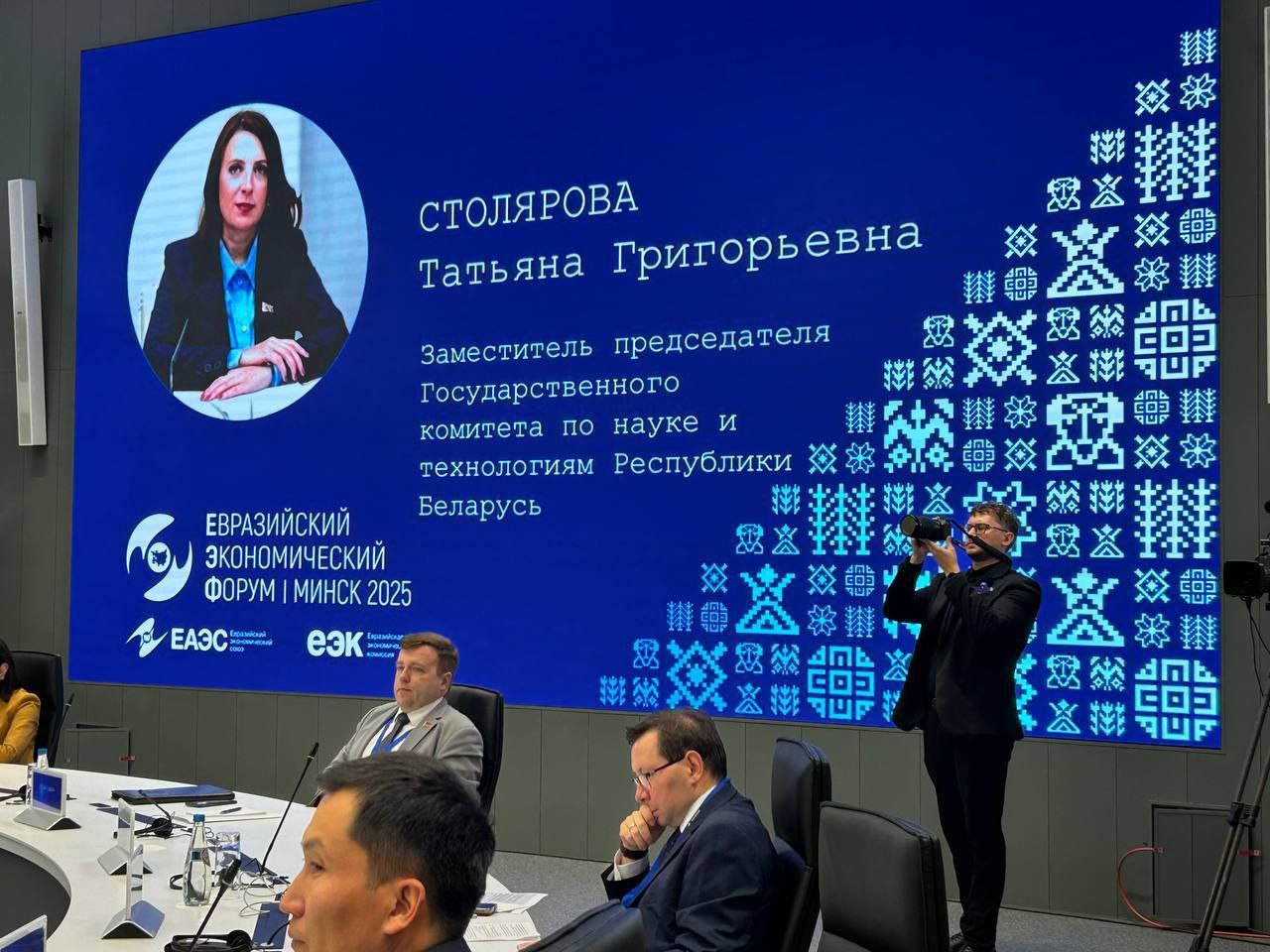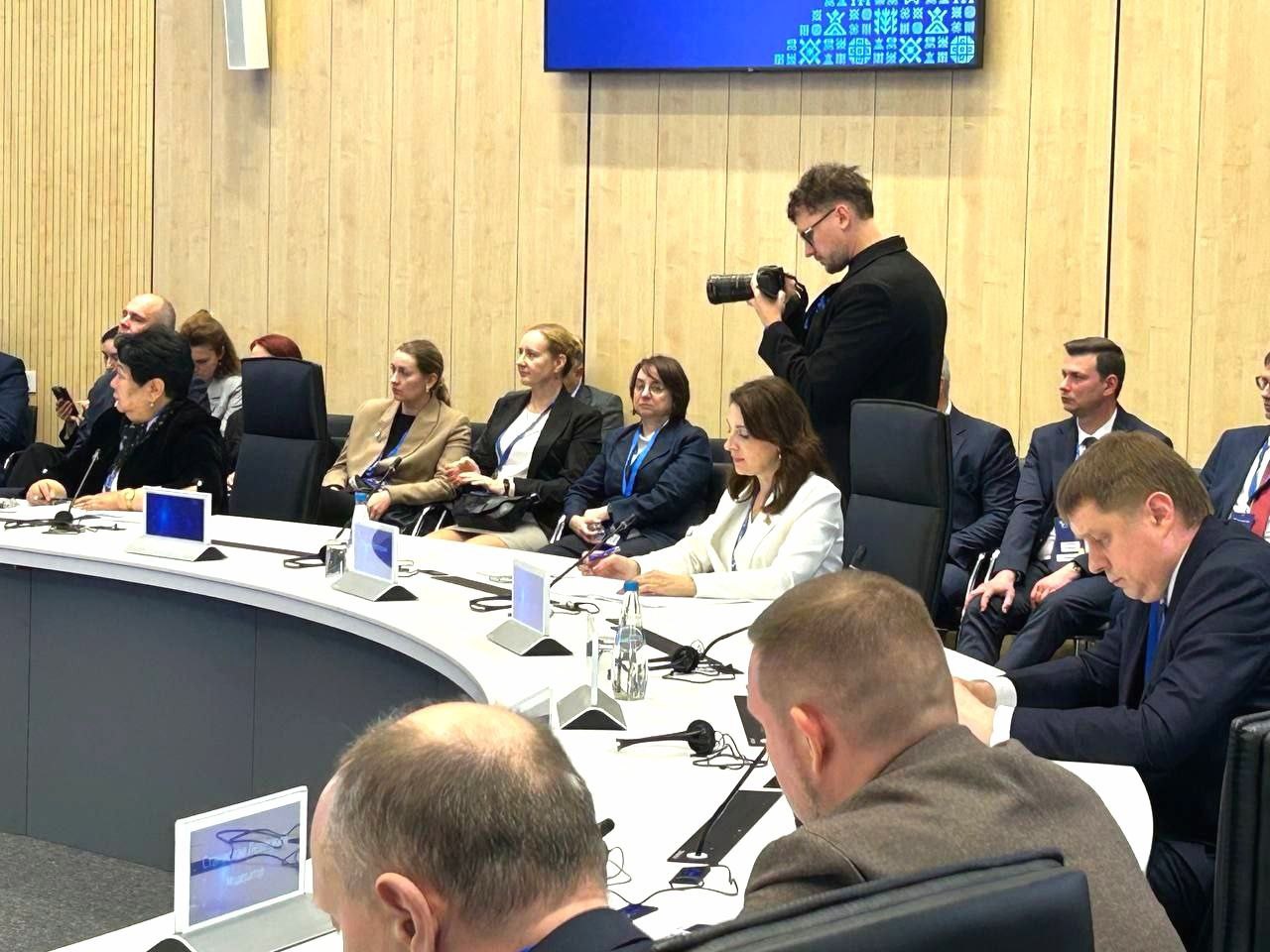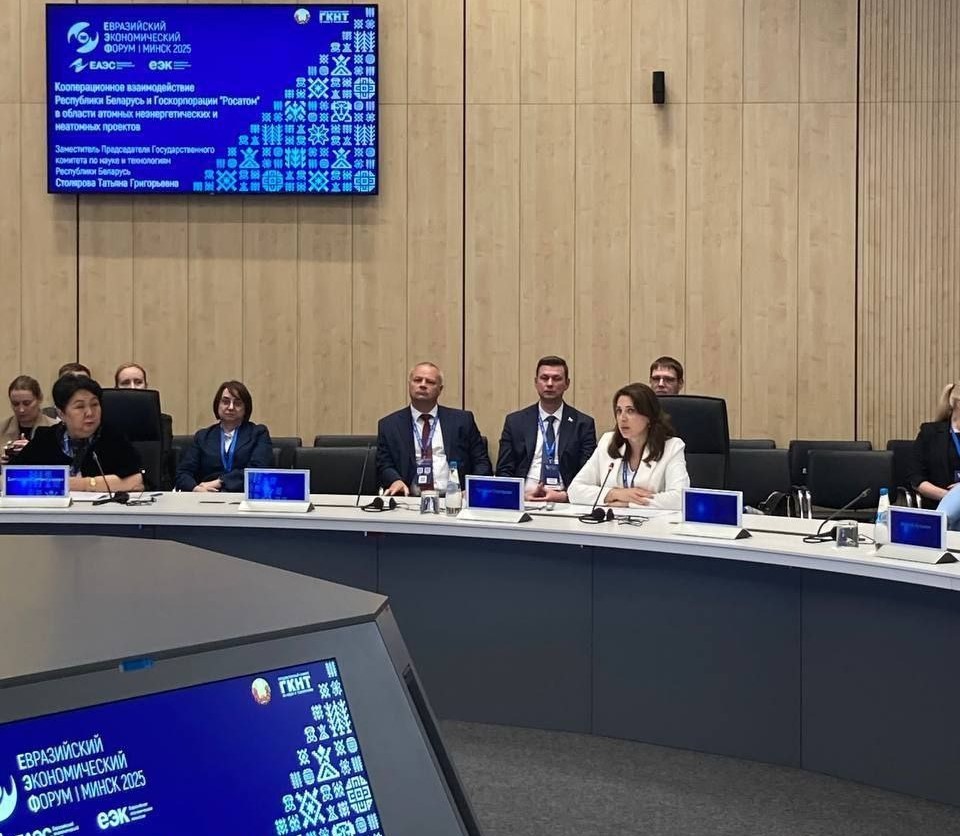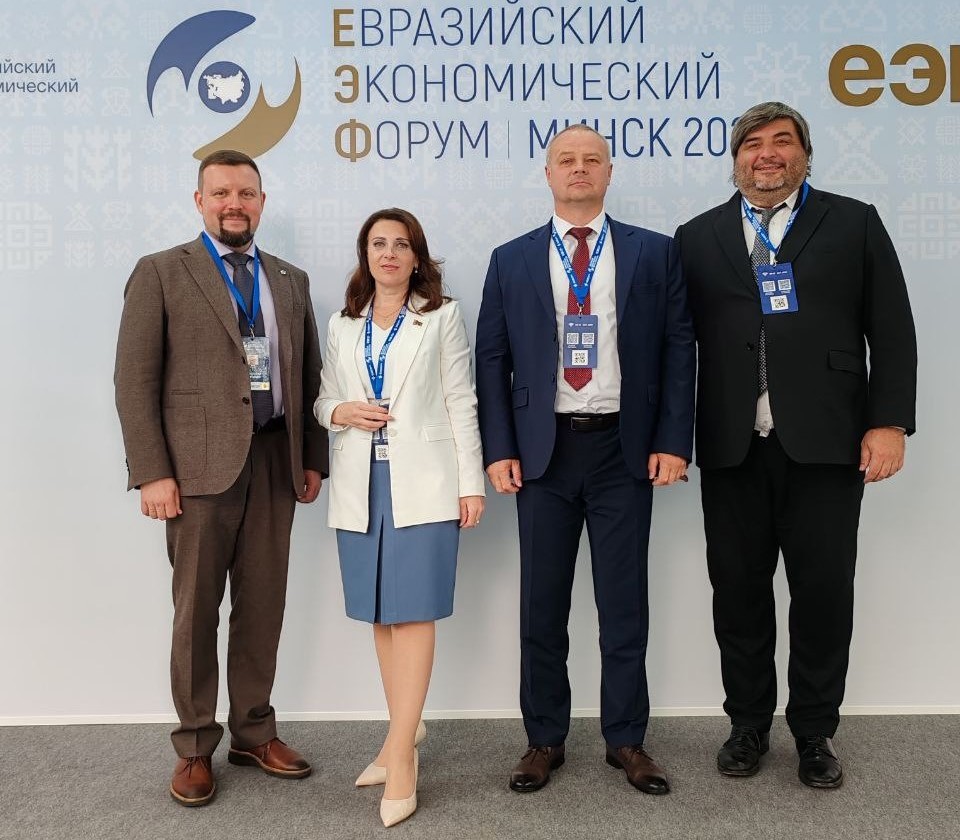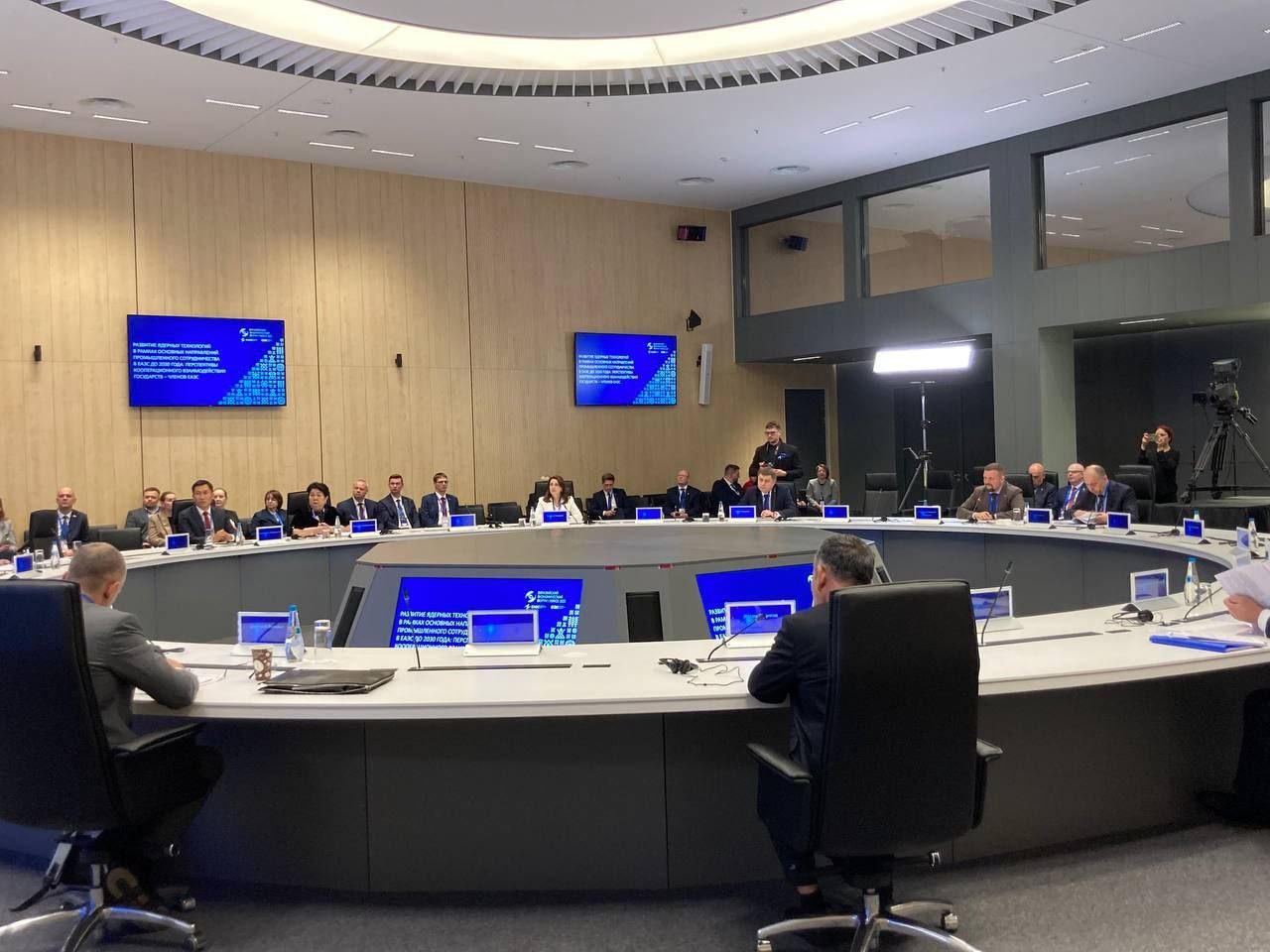
|
|
|
|
|
| |||
|
||||||
|
|
|
Tatyana Stolyarova: EAEU countries have the scientific base to become leaders in the use of peaceful atoms outside of energy 30.06.2025
Active cooperation in the nuclear non-energy and non-nuclear high-tech sectors, which is developing between Belarus and the state corporation Rosatom, has the potential for scaling within the Eurasian Economic Union. This opinion was expressed by Deputy Chairperson of the State Committee on Science and Technology of the Republic of Belarus Tatyana Stolyarova during the round table "Development of nuclear technologies within the framework of the main areas of industrial cooperation in the EAEU until 2030: prospects for cooperative interaction of the EAEU member states" on the sidelines of the Eurasian Economic Forum. Tatyana Stolyarova first focused on the topic of cooperation between Belarus and Russia in the field of nuclear technology. "The Belarusian NPP has certainly become a flagship project, a symbol of a technological breakthrough. However, the potential for Belarusian-Russian cooperation in the nuclear sphere is much broader, synergy with non-nuclear industries opens up unique opportunities. Belarusian organizations and the Rosatom State Corporation are actively developing cooperation in the nuclear non-energy and non-nuclear high-tech sectors. For this purpose, a corresponding comprehensive program is being implemented, which includes specific steps in priority areas: nuclear medicine, digitalization, additive technologies, electric transport and others. Each area has a clear plan with appointed performers and deadlines," she said. According to Tatyana Stolyarova, cooperation with Russia in the field of medicine and healthcare is already yielding tangible results. In the field of industry and materials science, work is underway to create a promising Republican Center for Additive Technologies of General Access. It is planned that the center will develop new methods and materials for 3D printing, conduct research and train specialists for various industries. Another promising area of cooperation with Russia is industrial robotics and machine tool manufacturing. Here, projects are being developed for the joint development and production of high-tech products with subsequent provision of industrial enterprises of Belarus and Russia with them. Issues of export supplies to other countries are being worked out. In addition, the Union State is jointly developing comprehensive solutions for environmental protection from contamination by unsuitable pesticides, including the creation of neutralization technologies. A number of joint projects are also being implemented to introduce simulators for training power plant personnel. Cooperation is being carried out in the field of energy storage systems and the development of traction batteries for electric transport. "The examples given are only part of the work that is currently being carried out in the area of developing Belarusian-Russian cooperation in nuclear non-energy and non-nuclear areas. I am confident that this experience has the potential for scaling within the Eurasian Economic Union," the Deputy Chairperson of the State Committee on Science and Technology noted. Taking into account the technological advances and competencies of scientific and industrial organizations of the EAEU countries, she named a number of areas of cooperation in the nuclear non-energy sphere as promising. These include joint projects for the production of isotopes and radiopharmaceuticals based on enterprises of the union countries, cooperation in the development and implementation of artificial intelligence systems for processing diagnostic images of positron emission and computed tomography, joint research and development work and the introduction of radiation technologies to modify the properties of materials, giving them unique characteristics (strength, heat resistance). As well as the use of particle accelerators for the sterilization of medical devices, disinfection of food products, purification of wastewater and gas emissions, etc. "The countries of the Eurasian Economic Union have the necessary competencies and scientific base to become leaders in the use of peaceful atoms outside of energy and in the creation of advanced non-nuclear technologies on this basis. We see great potential in the creation of joint high-tech products and services — from life-saving radiopharmaceuticals to environmentally friendly industrial technologies. And the synergy of our scientific schools and industrial capacities will help solve a number of problems. We propose to work together, to intensify our interaction so that this enormous potential is realized for the development of real sectors of the economies of the EAEU countries," concluded Tatyana Stolyarova.
|
|||
|
